The Top 10 Coolest Things I Saw At CES 2019
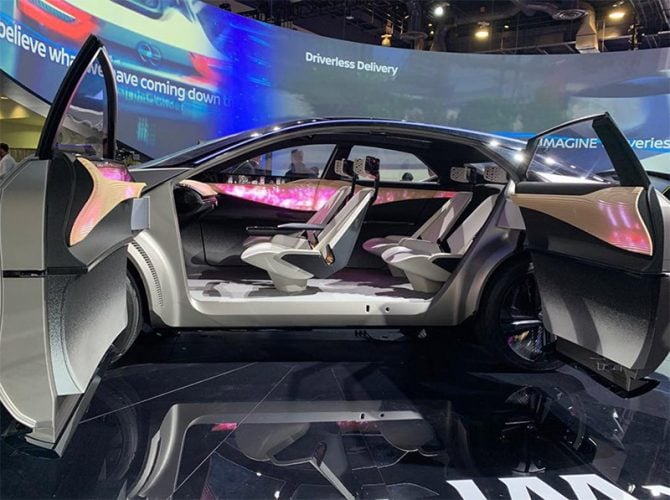
This was my first year attending CES in Las Vegas, and while people had told me it was the tech mecca – I wasn’t quite sure what to expect. I’ve been to San Diego Comic-Con for 10 years straight, and that houses about 150,000 in total attendance, so I I thought I was relatively well-prepared for the crowds… CES hosts about 180,000 in total attendance – which doesn’t seem that much larger – but felt about 5 times the size to yours truly.
Massive size aside, I was truly in geek heaven for the 3 days I was able to attend. I was on assignment for Autotrader, who occasionally will send me out on events like this where I can completely geek out over car tech, which I absolutely did here, but not exclusively.
I was able to walk around and explore not only vehicle technology, but also booths showcasing 3D printing, artificial intelligence, audio performance, computer hardware, content and streaming services, cybersecurity and privacy, photography, drones, gaming, lifestyle, robotics, smart technologies (cities, home, and retail), virtual reality and more… I could keep going, but those were just my favorite categories.
I shared a number of the technologies I found the most exciting – and most concerning on Instagram over the course of my visit, but want to also share them here and create a dialogue around them.
The Top 10 Coolest Things at CES 2019
10. Audi’s Immersive In-Car Entertainment
The “Audi Immersive In-Car Entertainment” project presents a novel approach to experiencing movies, TV series, and streaming content in an automobile with all of your senses. From a technical perspective, it takes the exact opposite path to the “Audi Experience Ride”. The car remains stationary; only its body moves—to match the images the occupants are seeing. They are immersed into the world of the movie as seat vibrations, sound, and interior light animations intensify this effect. Exciting car chases, stormy winds, and even the heat of a ride through the desert can be felt with the viewer’s own body.
You might ask what’s the use for this technology? For drive-in movie theaters? For movie nights in your garage? What’s the use case for this? The press release for this states the potential to turn idle and waiting times, whether in your garage or while you are stuck in traffic, into fun times. Even at slow driving speeds, it is possible to experience entertainment content in an entirely new way and to increase the degree to which the passengers become immersed in the action. I
Audi was showing Marvel movies on the screen as I walked by this on my first day at CES – so naturally it got my attention – but I can’t help but think about what a potential hazzard this would if you’re using it during “slow driving speeds” or any driving speeds for that matter. For gaming, however, I can absolutely see the possibilities that this could open up to further immerse players in the game. Or maybe even for your companies that want to further immerse tour-goers in an enviroment from their favorite film or tv series… looking at you Atlanta Movie Tours.
9. Furrion’s Adonis
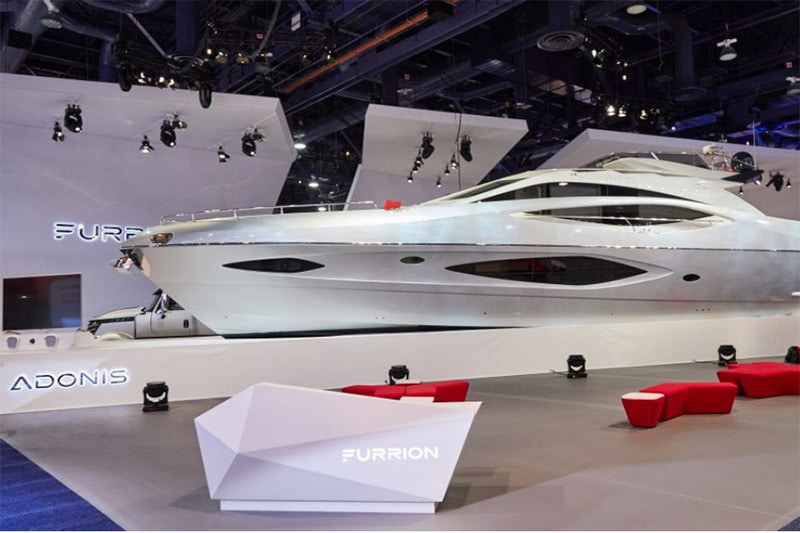
Alright so this one was more of just a “holy…wow… that must have been a fun load-in” moment. Furrion’s mission is to connect sustainability and modern luxury – and that was showcased through the products they had on display at CES 2019. While they’re not selling yachts, they did have a 78-foot customized Numarine yacht on display – which towered over the booths in North hall of the Las Vegas Convention Center.
Adonis, the crown jewel of Furrion’s concept fleet, showcased a life of luxury paired with futuristic innovation and artificial intelligence, with its virtual concierge Angel. Artificial Intelligence was just one of the new innovations that Furrion debuted. In just its third year exhibiting at CES, Furrion has quadrupled its footprint at the show with additional exhibits that showcased Outdoor Living, Sustainable/Portable Energy, Kitchen Appliances and Compact Living.
Learn more about Furrion at CES 2019 here.
8. 3-D Printing Food – The World’s First Chocolate Pen
Sweet Chocolate! I’m fully behind this product. I’ve not followed the 3D printing industry very closely, but I was aware of the opportunities that 3D printers were opening up – especially for small businesses and startup companies. However, I was unaware that food had entered this space. If I could 3D print myself an entire (and healthy) dinner – I would save so much time (and maybe also money if it wasn’t prohibitively expensive).
Enough of my ramblings, JER Education is making a 3D printer that’s aimed at the consumer market, and for something even more portable – they have something for that too – the JER chocolate 3D printing pen.
There’s no pricing or release date on these products – but I’ll leave you with this thought. In addition to chocolate, the JER printer can also print out cheese, jam, mashed potatoes, and more…
Learn more about JER Education here.
7. Horizon Robotics – Smart Retail
This is one of several technologies that creeped me out. From a data nerd position, I absolutely love this and get giddy about all the information you can collect to make a better experience for consumers – but from a personal position, we’re going to continue to lose our privacy at a rather alarming rate. This technology is not just tracking what you’re most engaged with – but it’s also noting your demographics. It knew that I was a young female and had walked by their booth 6 times…
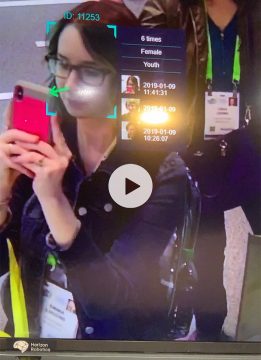
Horizon Robotoics, which is about to close a $600 million Series B, was far the only company at CES demoing this technology – a LOT of companies are working on it. But that doesn’t make me feel any better. The United States Post Office also had a booth – where they were showing casing a smart mailbox – one that would tell you when there was mail in your mailbox by notifying your Alexa, Google Home, smart phone, smart watch, etc… this service would be intregrated in with a service they already have Informed Delivery – which means they’ll know the exact mail that is in your mailbox – and they’re also looking at what marketing opportunies that presents. If you get something from Delta – you may see you start getting more travel information sent through your smart devices. The marketing opportunities are endless – but your privacy won’t be.
6. Omron’s Robot
Omron, a global leader in the field of automation, brought their AI-equipped table tennis tutor, Forpheus, to CES – and totally won my ping-pong-loving heart. Forpheus illustrates how intelligent machines can learn from human interaction and help develop and support human potential. Rather than competing, Forpheus learns from and tutors each player, adjusting his abilities to promote longer rallies, coaching and encouraging the other participant throughout their match. I’m not saying I’m great at ping-pong, because I’m really not, but I feel like I could play Forpheus for hours!
This was the fifth-generation Forpheus, upgraded with advanced capabilities to learn from and coach the player, an expanded range of movement, faster ball return skills, enhanced people and ball-sensing prediction and more profound AI-powered personalized coaching.
5. Bell’s Urban Air Taxi
The Bell Nexus was unveiled at CES, and it had everyone in awe. The autonomous pod transport paints a beautiful picture of what a hybrid-electric propulsion system looks like. It captures the long-sought-after vision of quick air travel with a unique in-flight experience, keeping passengers connected to their lives and saving valuable time. Take a look below and find out more about Bell here.
4. Panasonic’s Real-Time Tracking and Projection Mapping
Now this was just cool. I could have watched this demonstration all day. This real-time tracking and projection mapping technology tracks the object 1,000 times per second!
Curious about how this can be used? There are so many applications for this. But I will leave you with this older video which is absolutely hypnotic.
3. HARMAN’s Personi-fi Technology
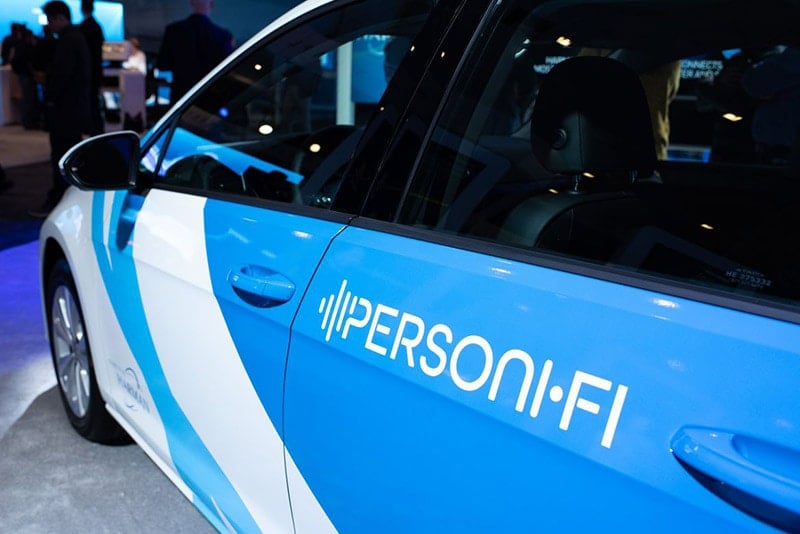
I was really impressed with this technology. A lot of the trends we’re seeing in tech is all about the ability to personalize experiences to the consumer. What I like, you might hate, and vice versa – so being able to customize an indvidual’s experience with a product makes it all the more attractive to the market. This is one of those products – and one of those products that has been amazing executed.
Wouldn’t it be cool if you could have the optimum audio no matter the car you were in? Well that’s exactly what the world’s first hardware-agnostic personal audio platform, Personi-fi delivers. It is not only a device but also a cloud service entertainment system designed to provide users with a simple, seamless, personalized audio experience wherever they are. I quizzed the reps on this up and down, and not all the details are currently available on it. But here’s what I did find out.
In a vehicle, Personi-Fi preferences for each user and their associated devices and services are downloaded directly to the end device. The Companion App acts only as a remote control. The car then performs the Personi-Fi processing on the head unit or amplifier, including listener preference EQ, Clari-Fi, Virtual Venues, stereo widening, and car seat location EQ. In addition to improved acoustic performance over app-only versions, this integration into the vehicle processing components unlocks a multitude of advanced Personi-Fi features that are enabled through access to in-car technology like microphones, navigation systems, and head unit data. It also integrates seamlessly with all head unit functions, extending the user’s Personi-Fi preferences to audio controls and audio sources including AM/FM, Satellite Radio, CD, USB and streaming sources.
I’ll keep you guys posted on this one as more information becomes available!
2. Nissan’s Invisible-to-Visible Technology
Nissan had A LOT going on at CES. They unveiled the 2019 Nissan LEAF e+ which has a range of 226 miles (which also powered a coffee bar that printed your face on your coffee at their booth), and they unveiled the coolest vehicle tech I saw this year, Invisible-to-Visible, or I2V.
I2V, is a future technology that will support drivers by merging information from sensors outside and inside the vehicle with data from the cloud. This enables the system not only to track the vehicle’s immediate surroundings but also to anticipate what’s ahead – even showing what’s behind a building or around the corner. Driving to a meeting and want to find the best place to park? This technology could point you to an open spot. AND, if that wasn’t cool enough, Nissan is making even a little more geek-out worthy with guidance given in an interactive, human-like way, such as through avatars that appear inside the car.
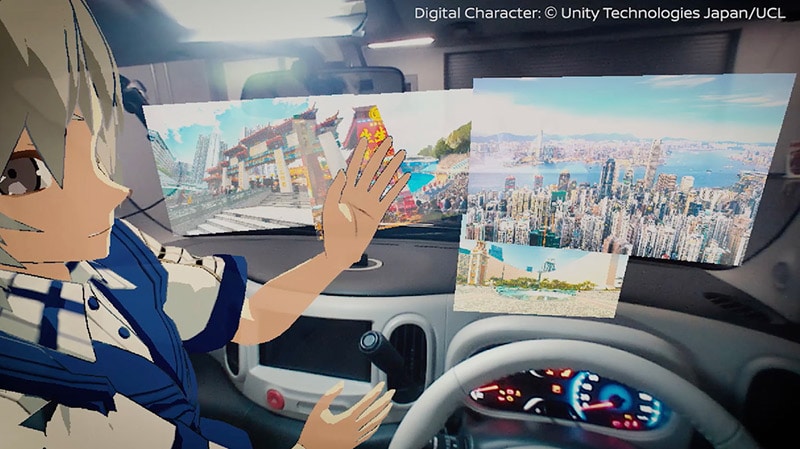
1. Samsung’s The Wall
Samsung’s The Wall is a 146-inch modular TV with MicroLED technology that delivers incredible definition, without restrictions to size, resolution or form. It is a self-emitting TV with micrometer (µm) scale LEDs – which are much smaller than current LEDs, and serve as their source of light. I’m drooling as I type this.
The MicroLED technology featured in The Wall eliminates the need for color filters or backlight, yet allows the screen to offer consumers the ultimate viewing experience. Also, the MicroLED screen excels in durability and effectiveness, including luminous efficiency, the light source lifetime and power consumption, setting the standard for future screen technology. When I saw this, the first thing that popped to mind was that this was the consumer’s answer wanting an affordable version of the Samsung Onyx which I was first introduced to last April at CinemaCon. It was game-changing movie theater tech, and The Wall is that – but for your home.
The MicroLED technology featured in The Wall eliminates the need for color filters or backlight, yet allows the screen to offer consumers the ultimate viewing experience. Also, the MicroLED screen excels in durability and effectiveness, including luminous efficiency, the light source lifetime and power consumption, setting the standard for future screen technology.
Pricing still hasn’t been announced, and some sites have guessed that it could cost upwards of $100,000. I hope that isn’t the case, because this is on my dream home wishlist. It was stunning to see in-person.
Do you all think these are all as cool (or potentially as scary) as I do? I’d love to hear your thoughts in the comment section below!
There’s also some technology that I didn’t see – that I’m kicking myself wishing I had. Here are the top 5 coolest things I wish I found the booth for (3 days wasn’t enough time for me to see everything).
Top 5 Coolest Things At CES 2019 I Didn’t See But Wish I Had
5. Sheertex Sheerly Genius Pantyhose
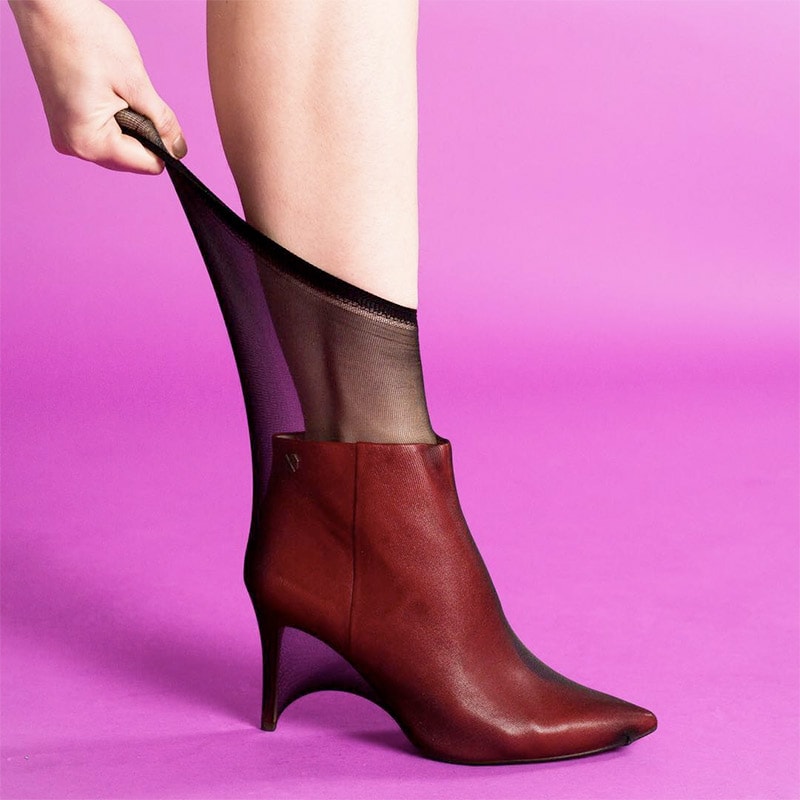
My initial reaction to “indestructible” anything is challenge accepted, so naturally, this caught my attention. These pantyhose use the same fibers found in bulletproof vests and will cost you around $100 per pair – but if they last – then they’re worth the cost.
Learn more about Sheertex here.
4. The North Face’s Futurelight
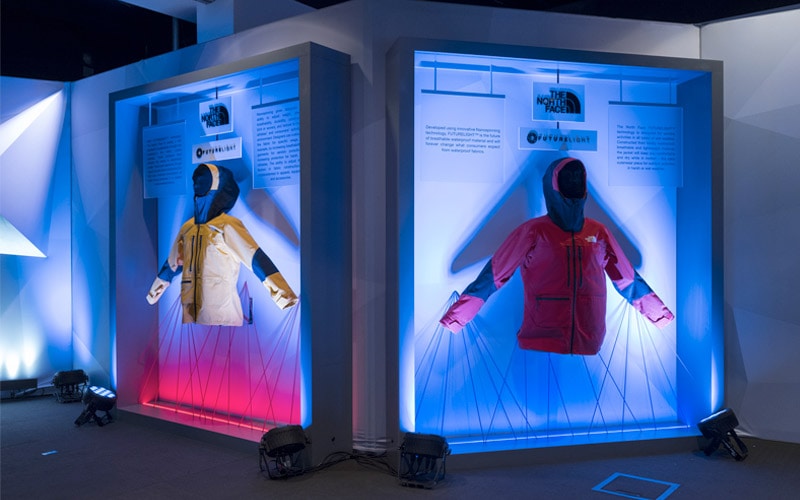
Launching this fall, The North Face showcased Futurelight – the world’s most advanced breathable-waterproof fabric. Futurelight uses a new process (called nanospinning) to create Nano-level holes, allowing for incredible porosity while still maintaining total waterproofness, letting air move through the material and provide more venting than ever before.
Additionally, Nanospinning gives designers the ability to adjust weight, stretch, breathability, durability, construction (knit or woven), and texture to match athletes’ and consumers’ activity or environment. Designers can customize the fabric for specific usage, for example, by increasing breathability in garments for aerobic pursuits or increasing protection for harsh, wet climates. The ability to adjust these factors in fabric construction is unprecedented in apparel, equipment and accessories.
3. LG’s Rollable TV

LG first debuted this concept at last year’s CES, but this year announced that they plan to start shipping these 65-inch OLED TV R’s soon. They come with a wide color color gamut, 4K resolution, HDR support – and from what I can tell – a pretty beautiful picture. That’s not even mentioing that it rolls up into a nice and tidy base much like a trade show banner would. Pricing isn’t out yet, but I’ll keep you guys posted!
https://youtu.be/qIKpUbHOPjY
2. Royole’s foldable phone
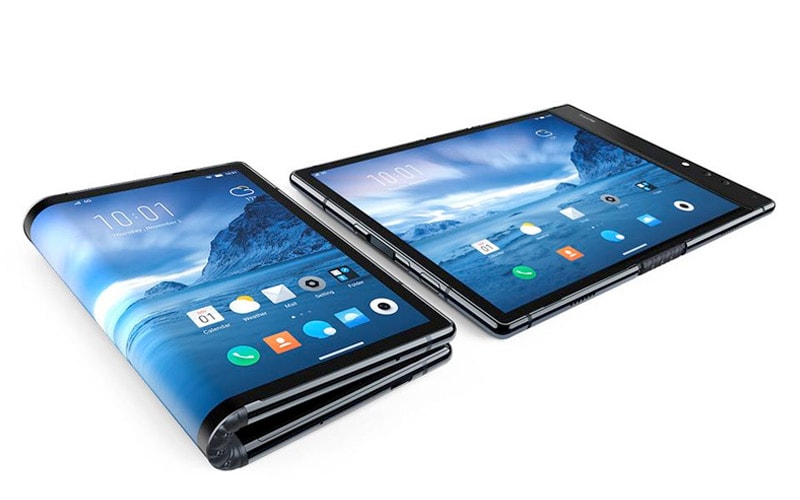
Royole Corporation, a leading innovator and manufacturer of next-generation human-machine interface technologies and products, had some impressive fully flexible displays to debut. The live demos underlined virtually limitless possibilities for flexible electronics technologies, including a look at the world’s first commercial smartphone with a flexible display, FlexPai,a first-of-its-kind flexible display integration with high-definition fashion wearables – including a top hat and shirt, and its RoWrite Smart Writing Pad, designed to accurately create, capture, store, and share all manner of real-time, conventionally written material on standard paper for digital application.
1. Opté Precision Skincare System
Age spots and dark spots can appear anywhere – and at any time. Whether on your face, arms, neck or otherwise, you can now remove unwanted dark spots on your skin like magic. The revolutionary new Opté Beauty System provides instant dark spot treatment results and long-term skin care transformation with a handheld, at-home dark spot and acne blemish corrector. In just three steps, you can instantly target skin spots, while reducing the appearance of unevenness over time – without affecting the rest of your skin.
I haven’t had the change to try this, but it perks my interest as I had a zit last year that wanted to leave its mark with me for the long-haul. I can cover it up quickly with concealer – but if I could zap it away with something like this – that’s even better. It seems a bit like real-life photoshop for uneven skin.
The company is backed by Procter and Gamble and will be available soon – Yu can sign up for their email address to be notified when it becomes available, and in the meantime – check out their site to learn more about Opte.
Overall, I was fascinated by everything that CES had to offer, and I’m setting a goal for myself now of returning in 2020. I left the show with 1,001 business ideas, new business connections, and just an overall sense of feeling cool – because I had gotten a glimpse into the future of what’s to come. I could have easily spent 2+ weeks exploring everything that was on display, but the event only truly runs 4 days and is spread out over large chunks of Vegas – including the convention center, the Sands Expo, The Venetian, The Palazzo, Wynn Las Vegas and Encore at Wynn, ARIA, Monte Carlo, and Vdara.
Fun CES Facts
- CES started in 1967, with 250 exhibitors and 17,500 attendees in New York City.
- 6,500 media attends
- 155+ countries are represented
- Over 4,500 companies exhibit
Wear your walking shoes and your Fitbit, my fellow geeks, because CES will be the most walking you’ve ever done.
Your Geek Girl,



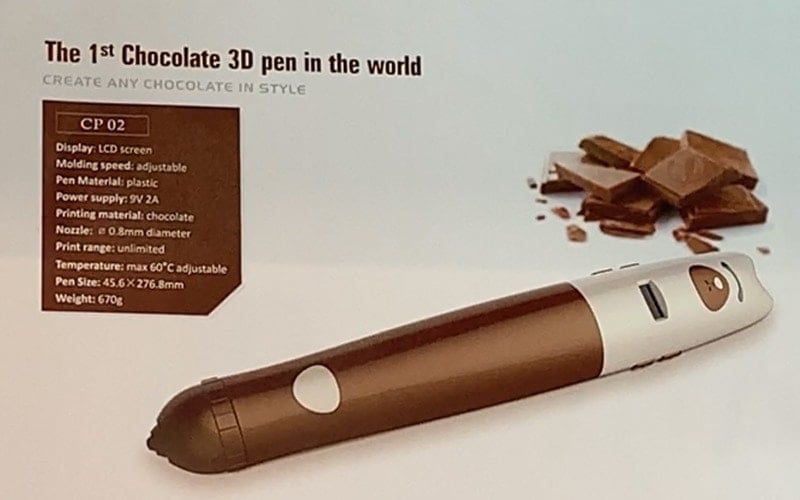
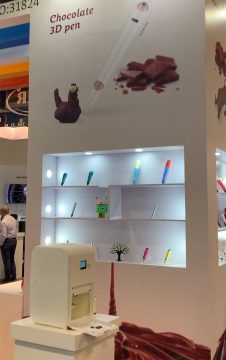

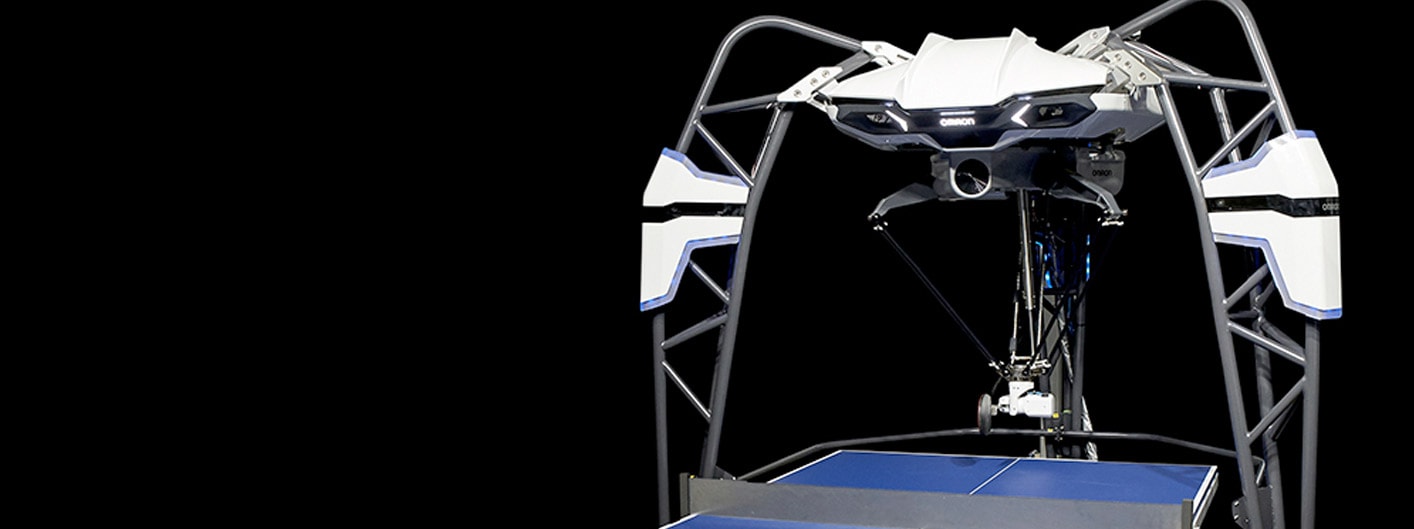
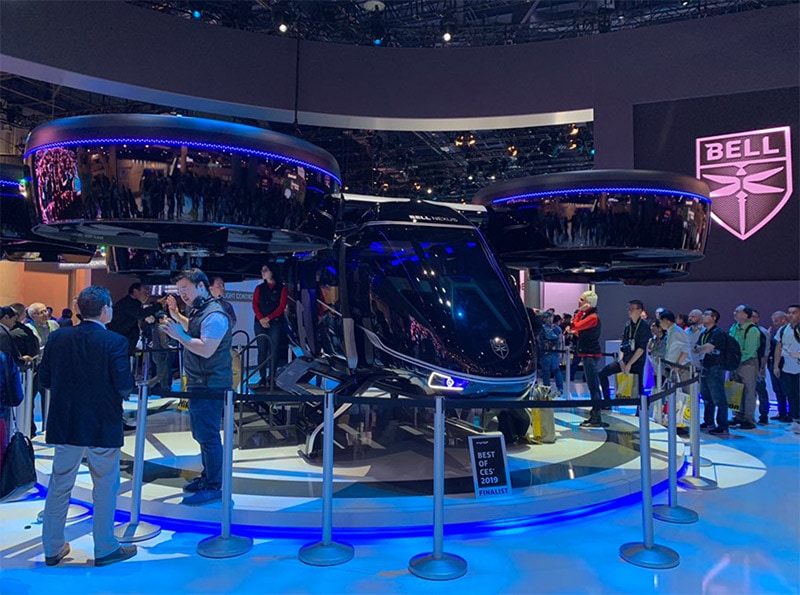
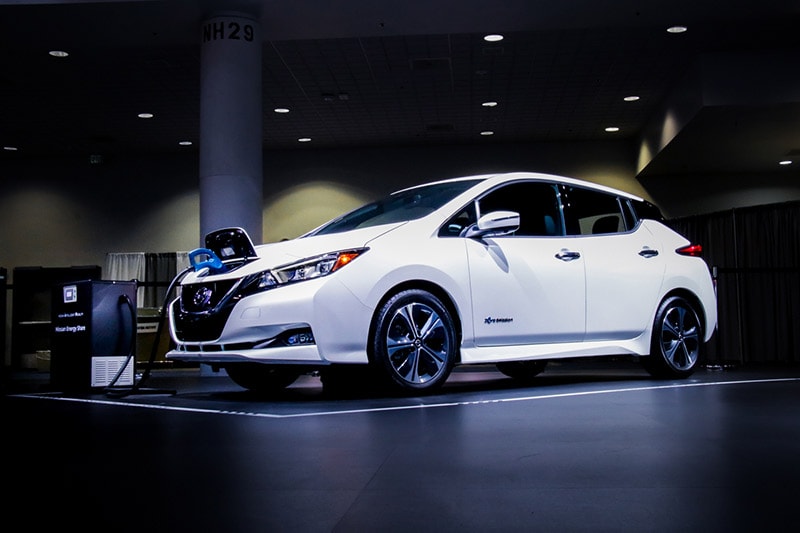
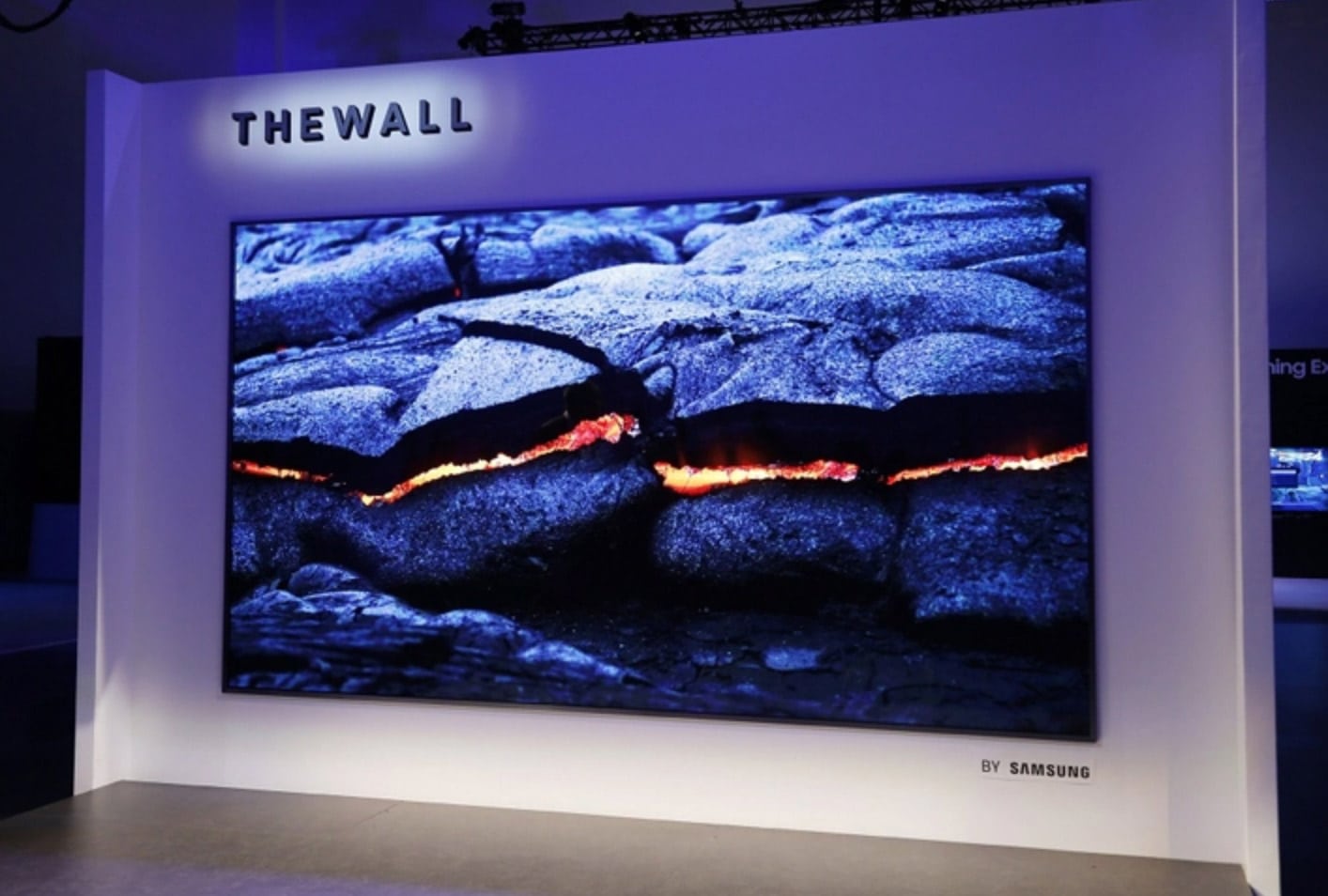

Responses